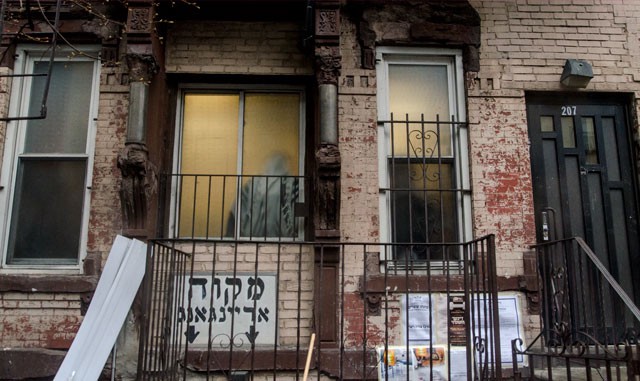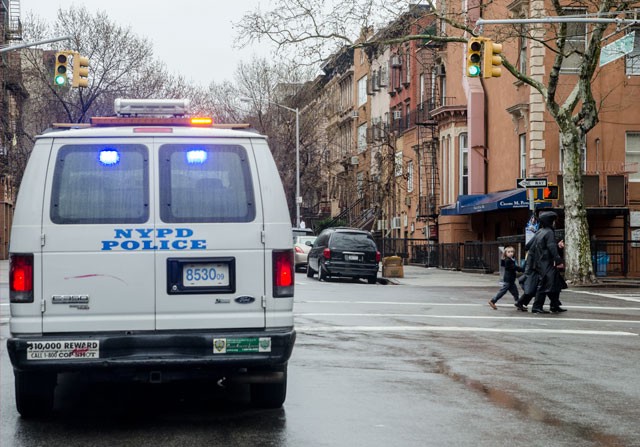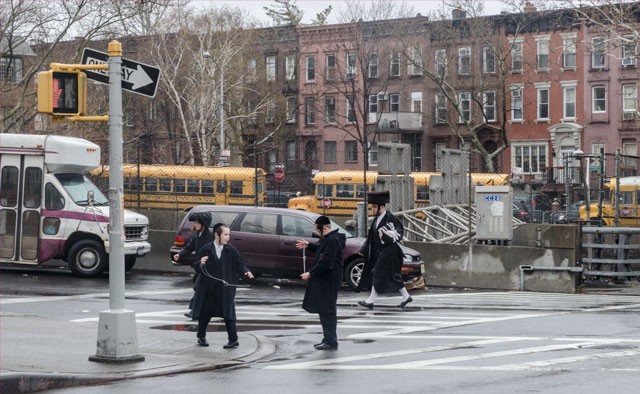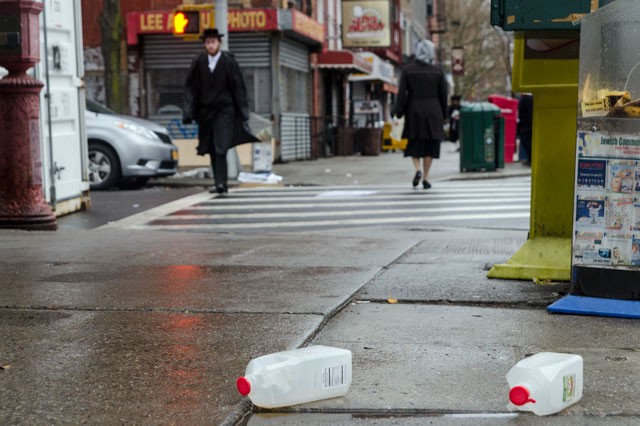How Dirty Is Your Kitchen?
Would your apartment pass the city’s restaurant inspection test? Of course not. You live in filth and even if you make an effort at tidying up every now and again the fact remains that here in New York City a thin layer of doody covers all, even the actual doody you do your best to step over as you move around town. Your surfaces play host to an orgy of bacteria, where the grossest of germs satiate their sick desires in a frenzy of deviant pathogenic passion. At night when you sleep the rats and roaches come out and dance a dervish of delight on your countertops as the vermin version of ‘In the Hall of the Mountain King’ plays in the background. The only saving grace is that you never prepare any food for yourself at home, so you can pretend that whatever has been delivered is coming from a kitchen where they actually make do an effort to keep things clean (although deep down you are pretty sure that they do not). Anyway, this guy’s didn’t either, so don’t feel so bad about how disgusting you are. You’re pretty disgusting though.
Mobile Love Stories
by Awl Sponsors
“All I could do was make phone calls and play Snake.”
The love for your mobile device may not have been the first, but it is definitely one of the greatest. Your phone evolves along with everything else in your life, an unconditional love in its own right, but without all of the baggage. Check out the video above to watch millennials wax nostalgic about their very first phones.
This interview series is the latest in The Mobile Movement campaign, in which AT&T; travels the country documenting the life and times of millennials. In each case, they aim to capture a different angle on the “networked existence.”
Follow the movement at www.youtube.com/themobilemovement.
White Babies White Racist Babies: Study
“The study revealed when it came to picking a playmate, the babies seemed more tolerant of unfairness when the white recipient benefited from it. They picked the fair experimenter less often when the unfair experimenter gave more toys to the white recipient rather than the Asian one. The researchers say this implies that babies can take into account both race and social history when deciding which person would make a better playmate.”
Pesach In Williamsburg
by Natalie McMullen

Sundown Monday marked the beginning of Passover, the festival that celebrates the liberation of the Jewish people from the Egyptian Pharaohs 3300 years ago, give or take. The story of Exodus tells of the 10th and final plague — the death of the first-born, cast down upon the Egyptians for failing to heed God’s command to free the Children of Israel. To avoid the scourge, the Israelites were instructed by Moses to mark their doors with the blood of a slaughtered lamb as code: “Pass over” this home.

A 73-year-old white supremacist killed three people over the weekend in a targeted attack on Jewish community centers in Kansas City. The New York City Police Department has amped up security at Jewish facilities across the city. The response of the NYPD, like the biblical smearing of blood on entryways, represents a stand against hatred, and the right of all individuals and groups to freedom and security.

Despite yesterday’s dreariness, the Hasidic Jewish community of Williamsburg was abuzz on this second day of Passover. Prayers echoed from tenement windows, Second Seder preparations were in the air, and families hurried through the rain, their hats protected by plastic bags.

Natalie McMullen is a street photographer, culture critic and food writer. She is an archivist of the resonant, a nerdy polisher of words, and a lifelong scholar on love and relationships. She is currently resident photographer at The Awl.
Dark Times For Dark Lord
“With old media getting savvier and BuzzFeed on the rise, Denton has seen his digital media empire threatened once again by powerful adversaries.”
— Oh my God the new Star Wars is gonna suck so bad.
Coffee Merely Good
“Whatever happened to good?” asks the white man with graying hair, dad khakis and an alarmingly large face as he fills his mug with coffee brewed from beans which were picked by poor farmers who make less than a few dollars a day for working the vast plantations that produce the beans, which are shipped to large industrial facilities to be toasted, pulverized into a dry, soil-like mass and eventually dumped into large blue tubs bearing the logo of Maxwell House, a billion-dollar brand of Kraft Foods, mega-purveyor of chemically ingenious foodstuffs, which is keen to regain its status as the biggest coffee seller in the United States, not by producing the best commodity coffee product, but by promoting the virtues of the merely good with a twenty to twenty-five million dollar advertising campaign. Indeed, what did happen to good?
How "Adventure Time" Came To Be

Adventure Time is a smash hit cartoon aimed primarily at kids age six to eleven. It’s also a deeply serious work of moral philosophy, a rip-roaring comic masterpiece, and a meditation on gender politics and love in the modern world. It is rich with moments of tenderness and confusion, and real terror and grief even; moments sometimes more resonant and elementally powerful than you experience in a good novel, though much of Adventure Time’s emotional force is visually evoked — conveyed through a language of seeing and feeling rather than words.
The heroes of Adventure Time — a boy in a white helmet named Finn, and his shape-shifting mutant dog/adopted brother, Jake — spend their days fighting evil, playing games, saving (and, sometimes, dating) princesses, learning secrets, and exploring their half-ruined home world of Ooo, as well as other worlds and dimensions. They possess a blind optimism that is as clueless as it is comforting: Whether they are fighting a swamp giant, trapped in a garbage-strewn cave or testing the super-spicy instant bath serum in the palace of Princess Bubblegum, they are (almost always) brave and kind; they want to have fun and they mean no harm. Finn and Jake are also full of a magical quality that real children have — of resilience, and of seeing the world as if for the first time.
These heroes are as fallible as can be — they’re quite capable of displaying selfishness, impatience and thick-headedness — but their essential good nature always wins out, if not their wisdom or their power to set things right. They mess up a lot, in fact, and their errors and imperfections aren’t magically erased at the end of each episode. At one point they accidentally create the conditions whereby a monster is able to extinguish all life in the universe with a wish; this idea scared me halfway out of my wits and into a curled-up ball under the covers. But it all blindly, clumsily gets set halfway-right again, leaving a host of potentially terrible consequences in the uncertain future: The show often produces a relieved, tender and half-frightened sensation, along with shock, pleasure and laughter.
Adventure Time’s dozens of characters are complex in a way that is rarely seen on television for adults, let alone children; each seems to inhabit his own world. In E.M. Forster’s memorable phrase, they are round characters, “capable of surprising in a convincing way.” Lumpy Space Princess is a lovable but ghastly teenager, tediously obsessed with her old boyfriend, the unprepossessing Brad; she treats her well-meaning parents very shabbily. Marceline the Vampire Queen’s father is present just enough to make it impossible for her to ignore or forget his cruelty and selfishness — qualities she has inherited, to some degree. Princess Bubblegum is afflicted with intellectual arrogance and an inability to anticipate the dangerous consequences of her scientific experiments.
The Ice King is a tragic figure — to my mind, the hero — of Adventure Time. He is a danger to himself and everyone else, subject to unpredictable rages and fits of violence, but he will break your heart. He is forever trying to marry a princess or make a friend, but it never, ever works out, he can only push the thing he desires out of reach by the very force of his longing. Despite being a furious half-crazy blue cartoon villain, he is entirely human; he is ridiculous, needy and sad; he is oneself.
“I identify with him more than any other character,” said Adventure Time’s creator Pendleton Ward, chatting offhandedly in the writers’ room at the studio in Burbank, where we had gathered with the show’s key writers and producers.
“But not in terms of, like, trying to capture women….” said Adam Muto, the show’s co-executive producer.
“Oh, yes!” Ward said stoutly. Then, after the laughter subsided: “No, no, no, I mean… not capture, literally kidnapping women…. Just like, living alone and having to talk to your pet.”
Read the rest at this story’s permanent home: The Hole Near The Center Of The World.
The Pains Of Being Pure At Heart, "Eurydice"
I was a sucker for the last one and while this doesn’t have the same immediate pull there is still enough here of everything that reminds me of the summer of 1987 that I don’t feel bad about it sharing it. Enjoy. [Via]
